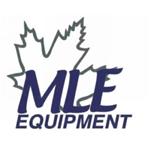Maple Leaf Environmental Equipment Ltd.

Products/Services: bulk carbon distribution; contaminated groundwater pumping systems; free product recovery systems; groundwater remediation equipment Industrial air treatment; industrial wastewater treatment; soil remediation equipment; systems designs and installations.
Company Description: Maple Leaf Environmental Equipment Ltd. designs, manufactures, supplies and installs equipment and systems for site remediation and pollution control. Working with local fabrication shops and with equipment manufacturers, they design, assemble, and deliver water and soil remediation systems that range from single well pumping systems to large combined soil vapour extraction/groundwater pump and treat/air sparging systems. Drawing from many different technologies, Maple Leaf Environmental Equipment Ltd. designs the best solution to the particular problem at hand.
Maple Leaf Environmental Equipment Ltd. also supplies high quality equipment for the industrial filtration market including EnviroMaster ultrafiltration units, self-cleaning water filtration systems and industrial air pollution control systems. Maple Leaf strives to provide its customers with the best technology available for the required tasks through the use of cost-effective and innovative designs.
Company Details
Year Established:
1992
Company Information
Bruce Lounsbury
Title:
President
Area of Responsibility:
Management Executive
Telephone:
(613) 498-1876
Fax:
(613) 345-7633
Email:
Click Here
Jeremy Dayment
Title:
Sales Manager
Area of Responsibility:
Domestic Sales & Marketing
Telephone:
(613) 498-1876
Fax:
(613) 345-7633
Email:
Click Here
Robert Kennedy
Title:
Vice President
Area of Responsibility:
Management Executive
Telephone:
(613) 498-1876
Fax:
(613) 345-7633
Email:
Click Here
Products
Environmental Equipment
Site Remediation Systems
Equipment and systems for the clean-up of contaminated soil and
groundwater. Includes groundwater pump and treat systems, soil
vapour extraction, multi-phase extraction, air sparging and
treatment equipment for air and water discharge. Rental
equipment and systems are available as well as purchase.
Industrial Waste Water Treament
Equipment for at source treatment of industrial waste water
including ultrafiltration, air stripping, media filtration,
activated carbon and advanced polymer treatment systems.
Industrial Air Pollution Control
Air treatment systems including activated carbon filtration,
regenerative carbon adsorption systems, catalytic oxidation and
wet scrubbers.
Environmental Products And Services
Bio-slurping, Vapour Extraction Or Dual Phase Extraction.
All of these techniques involve using suction on a well or series of wells to remove volatile hydrocarbons, free phase hydrocarbons, and water as well as to stimulate biological breakdown of hydrocarbons in the soil. Bio-Slurping combines the techniques of bio-venting to start bioremediation of hydrocarbons in the soil with a product removal technique for removing free product from the water table. By placing the well under vacuum, free product is drawn into the well without having to draw significant amounts of water, as is the case when using groundwater depression techniques. The vacuum induced in the well also creates airflow through the soil and begins breakdown of the hydrocarbons.
Soil vapour extraction removes volatile organic compounds (VOCs) from soil by inducing a vacuum on a well or series of wells in the soil. As the air is drawn into the wells, VOCs that contact the air are volatilized and are drawn up the well into the treatment system. Treatment can be through carbon adsorption or by catalytic oxidation. Global's Remidi-Cat (for BTEX) and Chloro-Cat (for chlorinated or mixed streams) are state of the art catalytic oxidizers that can be used to both provide the suction source for the site as well as the treatment system. High quality Rotron blower packages and air treatment based on carbon or bio-cell treatment can also be used. For simultaneous water processing, air sparging can be effective. For dual extraction, water can be removed using the suction source or separate pumps. Using an air stripper or carbon the VOCs are removed from the water.
Combination Air Stripping/Catalytic Oxidation Of Contaminants.
Air stripping offers a very efficient and cost-effective method of removing BTEX and chlorinated hydrocarbons from water. Maple Leaf Environmental Equipment Ltd. provides low-profile air stripping packages for flowrates from one to hundreds of gal/min. Based on the contaminant concentration of the off-gas, it may be economical to clean the air stream using a Global Remidi-Cat (catalytic oxidizer) or Chloro-Cat (catalytic oxidizer of chlorinated compounds). Carbon adsorption techniques can also be used for off-gas treatment. Advantages of this system are low capital costs, low operating costs and little system maintenance. System operation is highly dependable and adaptable to changing operating and water conditions.
Ceramic Filter System And Oxidization Systems.
For industrial odours, particulate and condensible organics, the Ceramic Filter System collects, volatilizes and destroys particulate and condensible organics emitted from industrial process streams, such as paint spray, lost foam casting, tenter frames, bakeries and cured rubber operations. It may be used independently, as hot or cold filter media, or it may be coupled with an oxidation module for total odour and VOC control. The filter may be used for both ambient temperature and high temperature emissions. The oxidation modules can be used with or without the ceramic filter system for control of VOCs created by the filter or the industrial process. Depending on concentration, type of contaminant, flowrate etc., the following technologies can be applied:
Catalytic oxidation, which provides a high destruction efficiency at a low temperature and is especially suited for lower concentration applications. For very low concentration, very high flowrate applications, molecular sieve absorbers coupled with catalytic or thermal oxidizers become cost-effective. Thermal recuperative systems, which operate at a higher temperature and provide heat recovery of up to 80% (typical uses are in high concentration units with low to medium volume). Thermal regenerative systems, which are used for high volume, low concentration applications and can achieve heat recovery of up to 95%.
Services